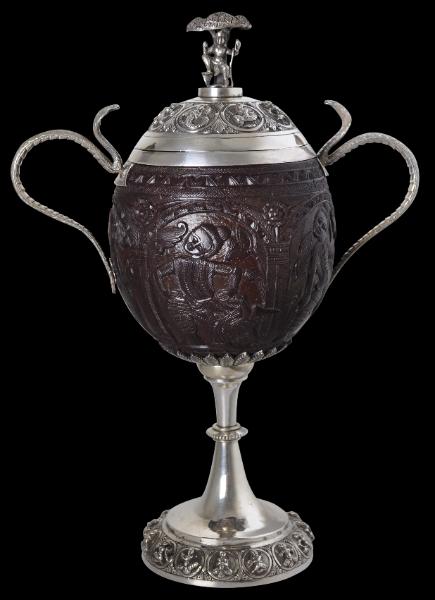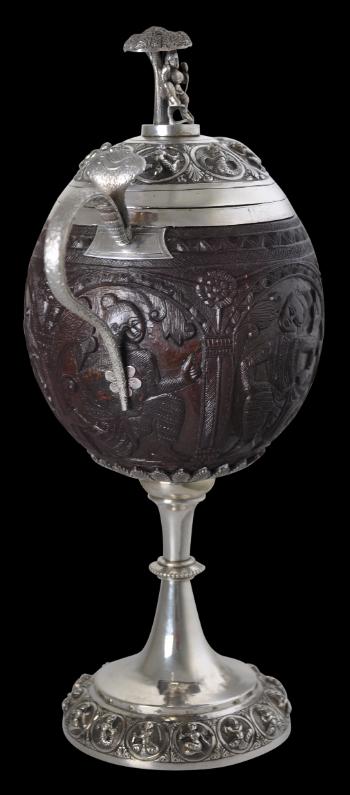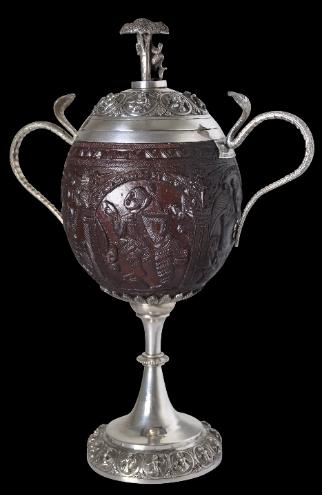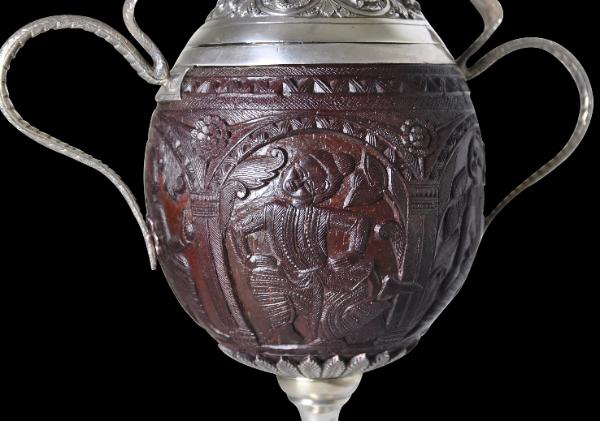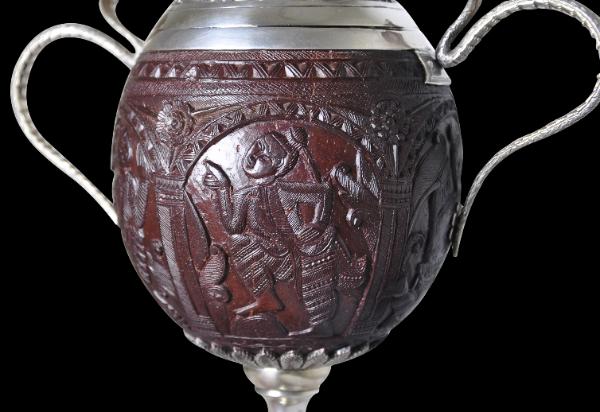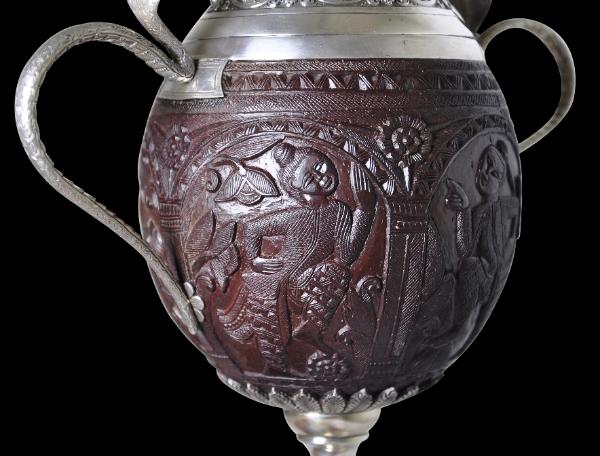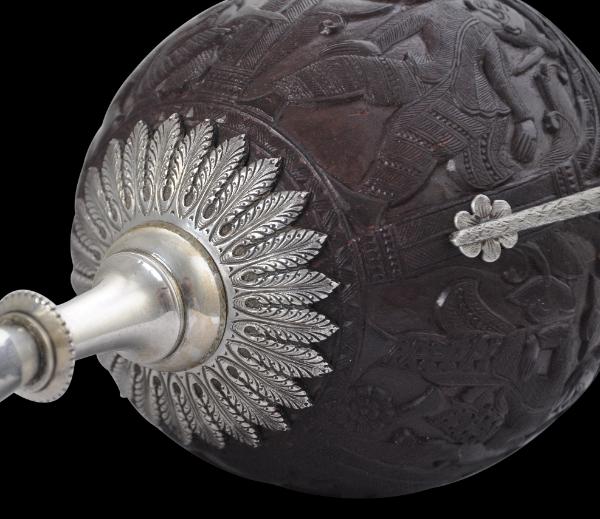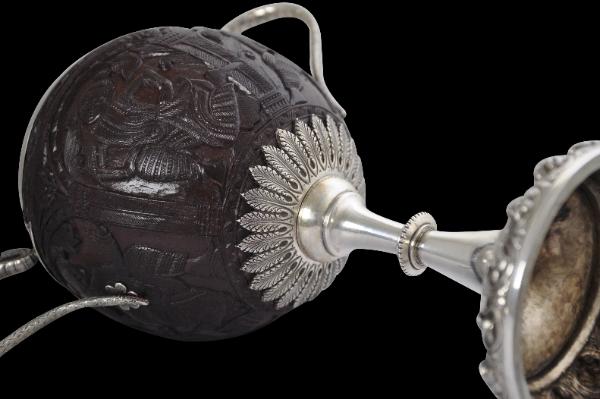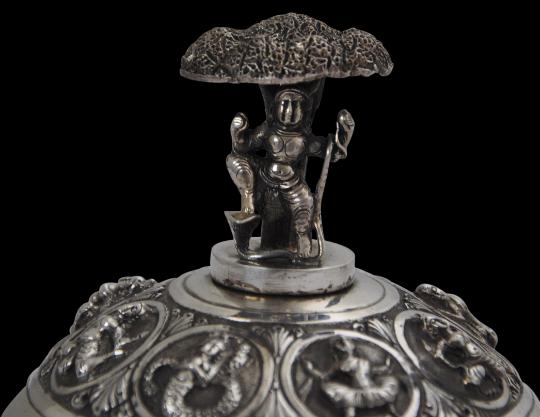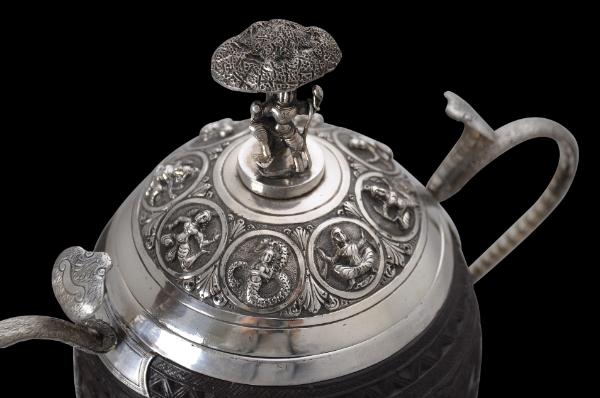
Colonial Madras Burma Silver
Covered Carved Coconut Vase with Silver Mounts
Madras, India, & Burma
19th century
height: 26.5cm, total weight: 541g
This elegant stemmed cup and cover tells an interesting tale about the colonial era and how Britain’s colonies were managed. It comprises a single coconut shell, carved, and with silver mounts.
The coconut has been carved in a Burmese manner, with five figures each within a single arched cartouche. Each figure is in Burmese dress. The nut has been carved independently of the mounts. The carving is the product of a Burmese craftsman almost certainly in Burma. Singer (1997) describes the production of carved coconuts in South Burma. He mentions that originally, coconut shells carved often with Burmese zodiac and other local designs were made into containers to store
laphet, pickled tea leaves mixed with sesame seed oil, a traditional Burmese snack. The carvers produced decorated coconuts for other uses in response to demand from the colonial and expatriate market.
The silver mounts however, are chased with ‘swami’ figures – stylised Hindu gods and goddesses – a manner that is synonymous with colonial silversmiths in Madras (Chennai).
The pairing between Madras silverwork and a Burmese carved coconut makes sense – Madras was the main port for sea links between British administered India and Rangoon the capital of British administered Burma. Indeed, Madras was the main entry point to India for many Burmese-made products, so much so that in other parts of colonial India, the items were assumed to be from Madras and were thought to have been made there.
Such a combination between Indian and Burmese work is rare. Dehejia (2008, p. 120) illustrates a money box made in Madras by P. Orr & Sons which utilises a carved coconut with silver mounts, but the carving work on the nut is in the same ‘swami’ style of Madras silverwork and clearly is a product of a local Madras carver. It also lacks the finesse of the Burmese nut here.
The foot is wide and domed. A tall, thin stem rises from it. It holds the coconut with a very fine, leafy support. The nut is attached to this. Two ‘S’ shaped handles formed as cobras leap away from the nut, which has a plain silver lined rim and then a domed lid. The lid has a wide band of ‘swami’ figures each in a separate roundel. And then an extravagant cast finial of Krishna beneath a leafy tree served as the finial.
The nut is in perfect condition with a lustrous patina; and the detail on the silver is crisp and without losses or dents.
References
Dehejia, V., Delight in Design: Indian Silver for the Raj, Mapin, 2008.
Singer, N., ‘Carved coconut containers’,
Arts of Asia, January-February 1997.Provenance:
UK art market; most probably has been in the UK since the colonial era.
Inventory no.: 2879
SOLD
to see colonial Indian silverwork, and
here
to see items from Burma.

